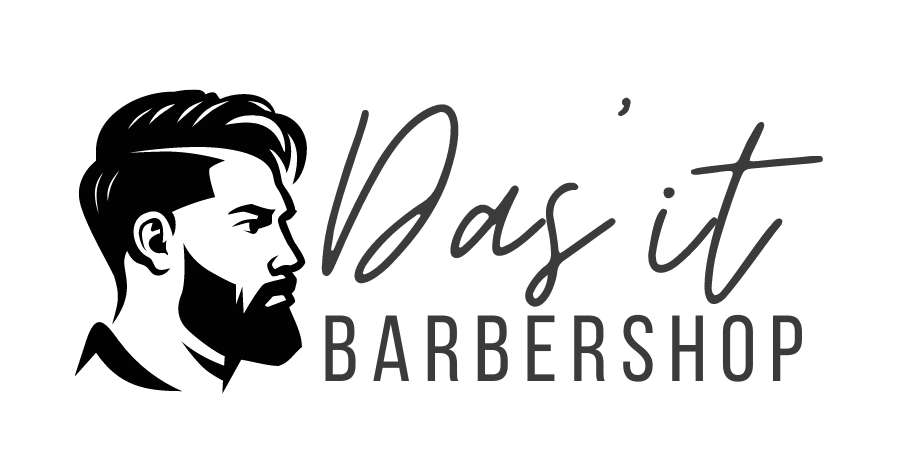Getting a haircut can be a daunting experience for many kids, especially those with sensory sensitivities. The sound of clippers, the feel of scissors, and even the bustling environment of a barbershop in New York can be overwhelming. This listicle offers six practical sensory strategies to help make haircuts a more pleasant experience for both kids and their parents.
Introduction to Sensory Struggles in Kids’ Haircuts
Many children find haircuts stressful due to sensory sensitivities that can trigger anxiety and discomfort. The screams of the clippers, the sudden snips of scissors, and the unfamiliar touch of hair falling onto their skin can all contribute to an overwhelming experience. Understanding and addressing these challenges early on can make a significant difference for children who are apprehensive about sitting in a barber’s chair. Recognising that each child’s response to sensory inputs is unique is crucial in creating a supportive environment.
In this guide, we will explore six effective strategies designed to help kids who struggle with haircuts. By implementing these techniques, parents can help ease anxieties, ensuring that visits to the barbershop in New York become more positive experiences. From preparing with visual aids to allowing sensory breaks, these strategies are aimed at making the experience smoother and more enjoyable for everyone involved. Whether you’re seeking creative kids’ hairstyles or looking to become a top barber, understanding sensory needs can enhance the haircut process, paving the way for more relaxing visits in the future.
Strategy 1: Setting the Stage – Creating a Calming Environment
Creating a calming environment is essential for kids who are sensitive to sensory stimuli. A peaceful atmosphere not only helps to reduce anxiety but also allows children to feel more secure during their haircut. Here are several key considerations to set the stage effectively:
Quiet Space
Opt for quieter times during the day when the barbershop in New York is less crowded and the noise levels are lower. Early mornings or late afternoons can often provide a more serene setting. Additionally, informing the barber about your child’s sensitivities can prompt a more mindful approach during the haircut.
Familiar Items
Bringing along your child’s favorite toy, book, or blanket can provide comfort and a sense of security. These familiar items can act as a distraction during the haircut, allowing them to focus on something they love rather than the unfamiliar sounds and sensations of the barbershop.
Comforting Scents
The use of lightly scented essential oils, such as lavender, can contribute significantly to a soothing atmosphere. Use a portable diffuser or a scent-infused cloth for your child to hold, as pleasant aromas can promote relaxation and alleviate stress.
By addressing these environmental factors, you can effectively create a more relaxed experience for your child. This initial step lays the foundation for a successful haircut, making both parents and children feel at ease and more prepared for the process.
Strategy 2: Sensory-Friendly Tools and Techniques
Using sensory-friendly tools and techniques can significantly reduce discomfort during haircuts. Here are several effective strategies to implement:
Clippers with Noise Reduction
Standard clippers can produce unsettling sounds that may overwhelm sensitive children. Opting for clippers equipped with a quieter motor helps minimize auditory distress. These noise-reducing clippers often operate at lower decibel levels, making the experience more pleasant and manageable for your child. Additionally, informing your child about the clippers beforehand and allowing them to see and touch the equipment can help to diminish apprehension.
Soft Brushes
The feel of hair brushing can be uncomfortable for some children. Using brushes with softer bristles not only eases the sensation against the scalp but also makes the experience feel gentler and more soothing. Look for brushes that are specifically designed for delicate scalps, as they can enhance comfort and contribute to a positive haircut experience.
Warm Water
If the haircut involves a shampoo, ensuring the water temperature is comfortably warm can be crucial. Cold water can be a shock and may cause discomfort, while warm water can create a relaxing effect, making your child feel more at ease. Always test the water temperature on the inside of your wrist before applying it to your child’s head to guarantee it’s suitable.
By incorporating these sensory-friendly tools and techniques, parents can significantly improve their child’s comfort during haircuts. These thoughtful considerations can create a more positive atmosphere, helping to foster a sense of security and ease throughout the process.
Strategy 3: Gradual Exposure – Building Tolerance Over Time
Gradual exposure is an effective strategy for helping children build tolerance and familiarity with the haircut process, reducing anxiety and fear. The goal is to introduce the child to each component of the haircutting experience in a gentle and incremental manner.
Short Sessions
Begin with very brief sessions where the child simply sits in the salon chair without any cutting tools involved. This initial stage allows them to acclimate to the environment, feel the chair beneath them, and understand that this setting is safe and welcoming.
Incremental Steps
Once your child is comfortable with just sitting in the chair, gradually introduce different elements of the haircutting process. Start by allowing them to hear the sound of the clippers from a distance. As they become more accustomed to the noise, you can slowly bring the clippers closer, while explaining what they are and how they function. Similarly, introduce the sensation of scissors by allowing them to touch them (while they’re closed) to demystify the tools used in haircuts.
Regular Visits
Schedule more frequent but shorter visits to the barbershop. These visits can involve simply observing others getting their hair cut or sitting in the chair while the barber engages in conversation without the use of cutting tools. This repetition fosters familiarity with the environment, gradually making the experience feel less intimidating.
By employing this method, parents can effectively promote comfort and adaptability in their children, ultimately leading to a more positive haircut experience. With time and patience, the combination of short sessions, incremental exposure, and regular visits can significantly decrease fear and enhance the child’s willingness to undergo haircuts.
Strategy 4: Distraction Techniques – Engaging the Senses
Distraction techniques can be highly effective in diverting attention away from sensory overload during haircuts. By engaging multiple senses, parents can help create a more relaxed environment for their child.
Visual Distractions
One effective method is to allow the child to watch their favorite show or cartoon on a tablet. This familiar and enjoyable visual stimulus can draw their focus away from the haircutting process. Choose a show that is engaging yet calming to keep their attention and make the experience more pleasant.
Tactile Engagements
Providing the child with a stress ball or fidget spinner can be beneficial. The act of squeezing or spinning engages their sense of touch and occupies their hands, which might otherwise be focused on the haircut. This tactile engagement not only helps relieve anxiety but also provides a sense of control.
Auditory Distractions
Utilizing noise-canceling headphones paired with calming music or nature sounds can help mitigate the overwhelming noises often present in a barbershop. The soothing sounds help to drown out the clippers and chatter, creating a more serene atmosphere for the child. Consider letting them select their preferred playlist or audio, as personal choice can enhance the effectiveness of this strategy.
By incorporating these distraction techniques, parents can keep the child occupied and engaged, ultimately making the haircut process smoother and more enjoyable.
Strategy 5: Sensory Breaks – Knowing When to Pause
Taking sensory breaks during haircuts can be instrumental in preventing meltdowns and ensuring the experience remains manageable for the child. Regularly incorporating pauses allows children to regroup emotionally and mentally, mitigating the buildup of stress associated with sensory overload.
Frequent Pauses
Plan for regular breaks throughout the haircut. These pauses can be as brief as a few minutes but should be strategically arranged to coincide with moments when the child appears overwhelmed or distressed. By communicating to the child that breaks are an integral part of the process, they may feel reassured and more willing to participate.
Sensory Activities
During these breaks, engage the child in a preferred sensory activity that promotes relaxation and focus. For instance, giving them a stress ball to squeeze can provide tactile stimulation that helps release pent-up anxiety. Alternatively, simple deep breathing exercises can be effective; guide the child through a short session of inhaling deeply and exhaling slowly, helping them regain composure before continuing.
Hydration and Snacks
Sometimes, a quick drink or a small snack can significantly reset comfort levels. Keeping hydration close at hand is essential, as even mild dehydration can lead to irritability. Likewise, providing a small, healthy snack during the break can help boost the child’s mood and energy, making them more cooperative once the haircut resumes.
By recognizing the signs that a child needs to pause, and implementing these strategies, parents can foster a calm environment that transforms haircuts from a daunting experience into a more pleasant and manageable one.
Strategy 6: Positive Reinforcement and Post-Haircut Celebrations
Positive reinforcement can significantly reshape how children perceive low-maintenance haircuts, transforming a potentially stressful experience into an eagerly anticipated event.
Praise
Start by offering specific praise during and after the haircut. Instead of generic comments, use targeted phrases like, “You did a great job staying still while we used the clippers!” This type of affirmation helps the child understand exactly what behavior is desirable and encourages them to repeat it in the future. Combining verbal praise with physical gestures, such as high-fives or hugs, can further reinforce their positive actions, making the moment feel special and rewarding.
Rewards
Establishing a reward system can also be beneficial. Consider implementing a simple chart where children can earn stickers for good behavior throughout the haircut process. These stickers can accumulate towards a larger reward, like a small toy or an outing to their favorite place. Reinforcement of this nature encourages children to adhere to the desired behaviors, as they have a tangible incentive to look forward to.
Post-Haircut Fun
Finally, planning a fun activity after the haircut can serve as a delightful incentive. Consider visiting a favorite playground, going for ice cream, or engaging in a fun craft project at home. By associating haircuts with enjoyable experiences, children can begin to look forward to the process rather than dread it, knowing that their courage and cooperation will be celebrated in a fun and positive way.
By reinforcing positive behaviors and celebrating achievements after each haircut, parents can help children develop a more positive mindset, making routine haircuts a joyful occasion rather than a source of stress.
Conclusion
Managing sensory sensitivities during haircuts is about creating a supportive and understanding environment. By implementing these strategies, from setting a calming stage to using distraction techniques, you can transform the haircut experience for your child. If you’re looking for a place with expertise in creative kids’ hairstyles and low-maintenance haircuts, consider visiting a top barber in New York. Become a top barber in catering to sensory-sensitive kids by incorporating these tips into your practice.
Ready to make the next haircut a breeze? Start implementing these strategies today!


